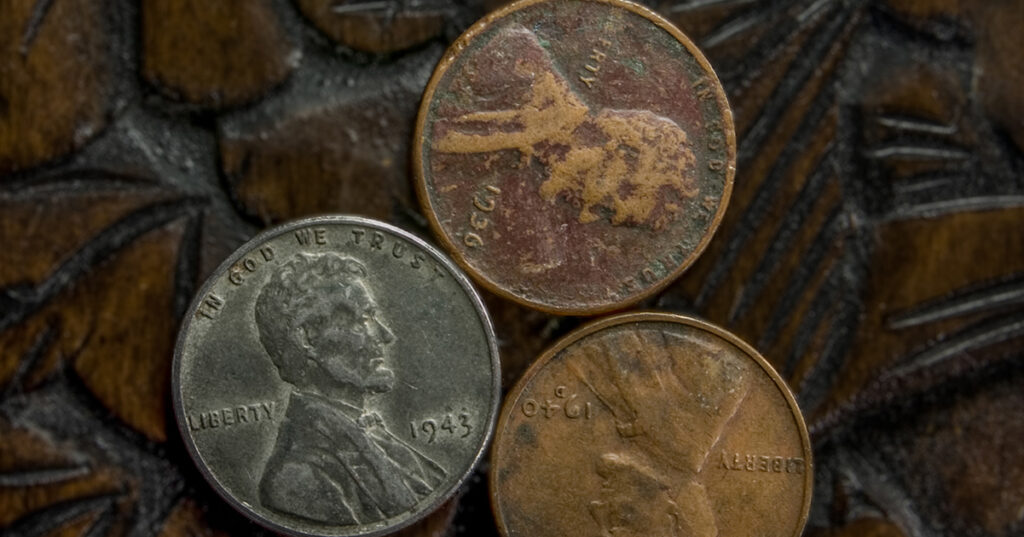
1943 pennies may be worth a lot more than you think
If you find a penny, pick it up as it could bring you a lifetime of luck.
These special pennies aren’t magnetic like other one cent coins, but if you are lucky enough to have one of about 40 believed to be in existence, it might attract a fortune at an auction.
Keep reading to learn more about these pennies!
In 1943 as copper and nickel were needed by allies of the war, almost all circulating pennies were made from zinc-coated steel.
But in one of the most valuable errors in coin history, some pennies were struck with copper and can now fetch a fortune.
The United States Mint explains there are only about 40 copper–alloy cents that exist today and their scarcity makes them incredibly valuable to collectors.
The 1943 treasure is “is one of the most idealized and potentially one of the most sought–after items in American numismatics.”
In fact, in 1958, a 1943 sold for more than $40,000 and in 2010, a lucky bidder scored himself $1.7 million at auction.
Do you have a rare penny?
Before you break your piggy banks and start looking for a rare 1943 penny, here are some key features that will help you determine if you have the rare copper version.
Check the Material
- Steel Penny: The vast majority of 1943 pennies were made from zinc-coated steel. These will have a silvery appearance and may have darkened or rusted over time.
- Copper Penny: If your 1943 penny looks like a typical copper penny (reddish-brown), you might have one of the rare error coins. These are made of copper, unlike the standard steel pennies of that year.
Use a Magnet
- Steel Pennies Are Magnetic: Grab a magnet and hold it close to your 1943 penny. If the coin sticks to the magnet, it’s made of steel.
- Copper Pennies Are Not Magnetic: If your 1943 penny does not stick to a magnet, it might be copper (but also check for counterfeits, more on that below).
Check for Signs of Plating
Beware of Altered Coins: Some steel 1943 pennies have been coated with copper to fool collectors. These are fakes, and the plating often appears uneven or can wear off in places, exposing the steel underneath.
Look for Authenticity
- Date and Mint Mark: Check the date “1943” on the penny. Mint marks (D for Denver, S for San Francisco, and no mark for Philadelphia) are also present on these coins.
- Professional Grading: Because some counterfeits are very convincing, the only way to know for sure if your penny is a real 1943 copper penny is to have it authenticated by a professional coin grading service.
If you have a non-magnetic 1943 penny that looks copper, it could be a rare and valuable find, but it’s essential to get it authenticated by professionals!
Please let us know if you’re holding onto one of these lucky pennies! And also share this story with your friends so they can also learn how to identify a potentially million dollar penny!
READ MORE